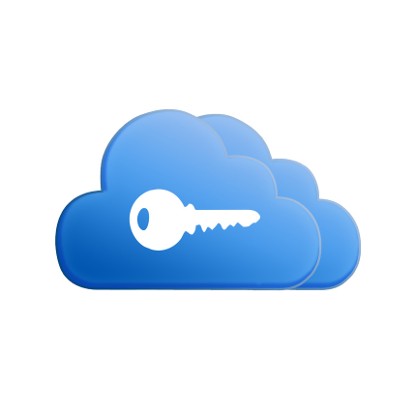Decision makers for small and medium-sized businesses certainly have a tough job. Each choice they make on the behalf of the business has repercussions, which could potentially influence the rest of the company, for better or for worse. Therefore, we’d like to take some of the pressure off of the decision makers with a recommendation: if you haven’t done so, consider utilizing Office 365 for your business’s various needs.
PCSOFT Blog
Making the move to the cloud is far from an easy task. You need a process that’s tailored specifically for your organization, and one which is open to adaptation. If your plans are foiled by unexpected complications, it can be difficult to keep on track, and your cloud’s migration could become a nightmare.
Every business owner is keenly aware of how prominent a role technology has in today’s business environment. Yet, the vast majority of companies aren’t doing enough to keep up with the latest developments, and therefore, risk missing out on serious opportunities for growth, or even going out of business.
When it comes to implementing enterprise solutions, everybody in your organization must be on board, or else operations will be hindered. In the case of a technology like cloud computing, you may discover that some of your staff have reservations about using it. Here’s how you’ll want to address the top three misgivings about the cloud.
When it comes to cloud computing, there may still be business owners who are hesitant to take advantage of it. This may be due to major security breaches reported in the news, or just that the idea of hosting their sensitive data off-site doesn't sit right. However, cloud computing security has come a long way over recent years; consider these three ways that the cloud enhances IT security.
Not too long ago, cloud computing was considered more of a luxury than a commodity. Nowadays, however, many companies, even those who are just getting their feet wet in the business environment, are fully capable of using the cloud for all sorts of purposes. As the cloud transforms into a more accessible technology, many large companies have pushed their cloud platforms to offer secure storage, software deployment, and communications, in an effort to reduce costs.
The cloud is changing the way that businesses keep track of their data, deploy applications, and access hardware like servers, desktops, and even networks. Yet, despite the massive benefits that the cloud and virtualization bring to the table, many organizations are still reluctant to make such a dramatic change to their infrastructure. Therefore, we’re here to make the cloud less scary of an investment for SMBs.
Defining Cloud Computing
Cloud computing is when a business stores information in an online environment. You can think of the cloud as a computer (or a series of computers) that’s managed and maintained by an external party, like a managed service provider. Your business hosts its data on this computer, and you access it via the Internet. It makes for a convenient and easy way to access your data, and the best part of cloud computing is that you don’t have to worry about upkeep. When it’s hosted by PCSOFT, we give it the same care and attention that we would provide to our own technology, so you know with certainty that it’s being taken care of to the best of our ability. Many organizations use the cloud to store their productivity suite, like Google Apps or Microsoft Office 365, and to store data that many employees need to access.
Defining Virtualization
Virtualization is the act of taking multiple pieces of your network, like a server, or a desktop, and running them virtually on a single piece of hardware. Doing so allows your business to eliminate the physical costs of running and maintaining multiple, and underutilized devices, and as such, it can be a great way to decrease overhead costs. Your organization can save a considerable amount of revenue through virtualization, which can be better invested in other parts of your business. Plus, virtualizing your network offers the opportunity to remove the physical components, which frees up plenty of room in the office for storage or other equipment.
One real-world example of virtualization is seen when a user’s desktop is deployed from a centralized or hosted server. Essentially, this allows the user to broadcast their desktop to any type of hardware, like a laptop, thin client desktop, a home PC, tablet, etc. This virtualization process provides users access to the files and applications they need, without running into the limitations of a computing device.
How are Virtualization and Cloud Computing Related?
The most dynamic way that cloud computing and virtualization are related comes by way of cost savings. Essentially, by entrusting your data to a virtualized infrastructure, you’re gaining access to high-end computing hardware, and when you go with a cloud provider, you gain the ability to provide needed computing resources for more users per capita, for less. Additionally, cloud computing provides a level of remote monitoring and maintenance that is difficult and expensive to achieve with an in-house team.
Managing and maintaining your business’s data shouldn’t have to be a struggle. If your in-house team isn’t fully invested in spending the time to know and understand your technology solutions, or they simply don’t have the time to give it the care that it needs, you could benefit from having an outsourced IT company like PCSOFT around to pick up the slack. With managed IT at your disposal, you can free up your team to handle new initiatives while knowing that your technology is being cared for by professional technicians.
Our technicians have the skills required to help you choose and implement any type of cloud solution for your business. Furthermore, once you’ve already migrated to the cloud, management and maintenance becomes easier than ever before. Instead of updating each individual workstation or server, we can handle it all in one fell swoop. This makes cloud computing and virtualization crucial processes toward maximizing your bottom line and income potential.
In other words, while you know that the cloud can be a great chance to push your business to greater heights, you need to take a risk if you want to see a return on your investment. Many of the world’s most lucrative services, like Netflix and Amazon, have seen outrageous growth thanks to cloud computing. Your business can experience cloud-based growth as well, but you need to be willing to explore new opportunities in order to do so. Cloud computing, in particular, is a service that’s especially kind to growing businesses, and it’s flexible enough to allow your business to adapt to its current needs easily.
We don’t want you to rush head-first into the cloud, though. Instead, we want you to do your research and take a moment to better understand what your specific cloud computing needs are. We recommend that you consider each of these three unique cloud computing options.
The Public Cloud
SMBs of all kinds are looking to the public cloud for cloud computing, and it’s easy to see why. The public cloud has great functionality for the services that the typical SMB needs, and it doesn’t require the in-depth maintenance that an in-house infrastructure would need. Unfortunately, this often means that the business is missing out on the ability to implement secondary security features and customizations that would be available for a private cloud solution.
Keep in mind that public cloud solutions are dependable, but they are set up as a one-size-fits-all solution, supporting many different users who are all basically getting the same service. Limitations of a public cloud solution include: not having a choice of where specifically your data is hosted, what hardware it runs on, or how it’s protected.
The Private Cloud
Businesses that are more security-minded or just want more control over their data will usually opt for the private cloud. A private cloud is usually hosted either in-house on company hardware, or managed and hosted by a managed service provider. Compared to the public cloud, private clouds offer more control over the settings and configurations of your cloud infrastructure. This means that you essentially have more control over your cloud solution, which means you can also integrate additional security features for your cloud infrastructure. One example of this is integrating a Unified Threat Management (UTM) solution to beef up your cloud’s data security.
The Hybrid Cloud
Businesses that want or need to utilize the efficiency of the public cloud, with the functionality of the private cloud, have another option for their cloud infrastructure: the hybrid cloud. Not only does your business get the ease-of-use of the public cloud, but it will also be able to fully leverage the security solutions and configurations that private cloud users boast about. It’s great for organizations that need to get the most out of their cloud infrastructure, without sacrificing functionality.
With so many options, you might have trouble gauging what kind of cloud solution you want. PCSOFT can help your business choose which cloud solution will benefit you most. Give us a call at 02 98730080 to learn more.
Save On Operating Costs
Obviously, when you don’t have to keep the lights on at the office and supply power to workstations, you’re going to save on the electricity bill, and this is just the tip of the savings iceberg. Think about not having to shell out for heating and air conditioning, not having to provide amenities like food and drink, and not having to pay someone to clean as often. All of these savings can really add up. Plus, if you decide to fully embrace having a remote workforce, you can even save on one of your most major expenses; paying for office space!
Save On Technology Costs
In the traditional office environment, every employee is provided a desk, an Internet-connected workstation equipped with mission-critical software, and access to other provided technologies, like a printer and fax machine. By having employees work remotely, you can save on all of these technology expenses. In fact, if you go “all in” with working remotely, you may even be able to avoid these expenses entirely. For example, for some employees, the prospect of working from home may be so enticing that they will gladly pay for their own equipment and software, an IT trend similar to BYOD (Bring Your Own Device).
However, in a work-from-home scenario such as this, you will still want to have in place some kind of oversight in regards to the devices accessing company files, which you should be able to easily afford by not having to pay for an office full of expensive IT equipment. Also, it may be advantageous for your company to provide the mobile devices your remote employees will be using, so you can have more control over updates and the device’s data.
Improve Employee Morale
As you’ve likely experienced, the best way to improve employee morale is to dish out raises and bonuses. Giving your team the chance to work from home provides them a raise of sorts, as well as saving you the aforementioned expenses, making it a classic win-win scenario. For example, if a worker doesn’t have to spend money commuting to work, going out to lunch, professional attire, and doctor's visits to take care of the flu bug that gets passed around the office every year, that all equates to more money in their pockets. Plus, remote employees won’t have to waste hours each week driving to and from work, and they’ll be able to spend more time with their families. All these factors greatly improve employee morale, which means they’ll work harder, be more loyal, and stick around longer.
If you feel uneasy about having a remote workforce due to a lack of oversight, then talk with PCSOFT about remote solutions that will allow you to keep tabs on your team, as well as stay in touch with them in ways that will make it feel like they’re in the next room, like video conferencing, a virtual private network, and other cloud-based collaboration solutions.
For many companies that have been utilizing the traditional office setup for years, shifting to a remote workforce may be a major change. Although, don’t let fear of the unknown keep you from taking advantage of this wonderful, money-saving opportunity. PCSOFT is here to walk you through what it takes to make the transition. Remember, the one thing you’ll want to avoid is declaring that your team can work from home without taking the proper precautions to protect your company's sensitive information. Therefore, we highly recommend that you talk with IT professionals before implementing such a policy. To learn more, give us a call us at 02 98730080.

















